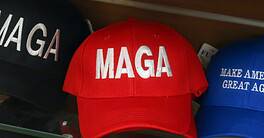Clement Naples, partner at Latham and Watkins, a global law firm specializing in intellectual property, visited Global Finance to talk trends in patent litigation, valuations and the role of IP in investment decisions.

Global Finance: What’s the state of IP litigation worldwide?
Clement Naples: Recent US Supreme Court cases have made it easier to invalidate certain patents, but have also made it easier for patentees to obtain enhanced damages. So while some patents are weaker, strong patents are more dangerous for an infringer. In 2014, patent litigation slowed down for the first time in five years and 2015 also saw a modest decline in filings, but damages awards have been increasing. Well-drafted patents can keep competitors from a market, deter them from bringing their own suits (for fear of a boomerang suit), and help collect royalties or lost profits.
GF: What role does IP play in investment decisions?
Naples: IP plays a large role because often the IP constitutes a companys most valuable assets. Investing in a company with a patent portfolio requires analyzing the patents from both a legal and a technical perspective. Patents not drafted with litigation in mind may not be able to withstand litigation, even if they describe a valuable invention. Further, while some companies have thousands of patents, usually only a small number are truly valuable. Still, a large patent portfolio alone can intimidate competitors and deter litigation.
GF: What role does IP protection play in the developing world?
Naples: Many companies are skeptical about IP protection in certain foreign jurisdictions where enforcement is difficult. Yet many are still filing patents around the world in the hope enforcement will improve. Companies doing business in the US can be sued in US courts for patent infringement, or be named in an investigation by the [US] International Trade Commission (ITC) if they are importing allegedly infringing products. The ITC is particularly useful when an importer has no US presence because the ITC has jurisdiction over the product entering the US.
GF: Are there different IP strategies for different jurisdictions?
Naples: Generally, strategy depends on the company and the nature of the product or method that it aims to protect. Some only need US protection, while others need more. Enforcing patents in multiple jurisdictions can be a very effective litigation strategy. For instance, a patentee with both US and German patents might file suit in the US and at the same time in Germanywhere infringement proceedings happen relatively quicklyand try to get a favorable ruling in Germany to create leverage.
GF: How can companies with limited resources defend patents?
Naples: Some companies, often referred to as patent trolls or non-practicing entities (NPE), are solely in the business of patent litigation. All companies, regardless of size, should consider the most cost-effective defense. Sometimes that means litigating to win, especially if the plaintiff is a repeat-offender NPE with a weak patent. Other times, its best to seek a quick and relatively inexpensive settlement. Some law firms offer contingency fee arrangements, and there are a number of third-party litigation funding companies that will finance all or part of a promising case. On defense, many law firms offer alternative fee arrangements, such as a fixed-fee or an award-based fee structure.
GF: How is the financial sector impacted by IP litigation?
Naples: Fintech is a hot area and clients are very interested in protecting their innovations. A significant number of early patents in finance are about computerizing long-standing financial practices. In light of recent case law, these patents are vulnerable and regularly found invalid. In addition, many of the early financial-related patents can be successfully challenged at the Patent and Trademark Office as a Covered Business Method, [an option] banks pushed for in response to patent trolls. Prospective patentees are paying careful attention to the recent changes that weakened many financial patents, and are now drafting patents with this law in mind.



